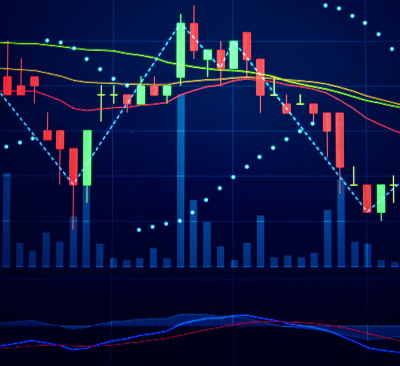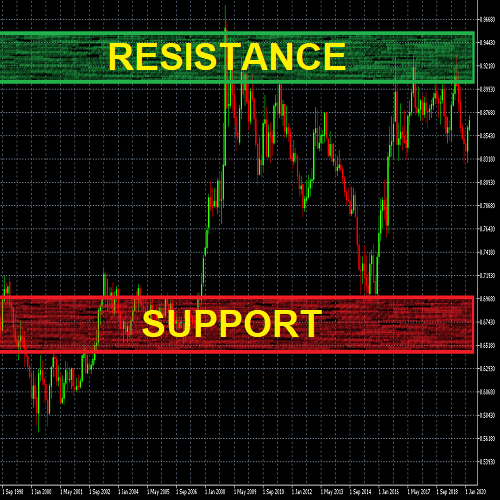Fundamental vs Technical analysis
What is the difference between fundamental and technical analysis? Queensway explores some of the differences between the methods.

More Fundamentals – the Technical Aspects
Fundamental analysis is used to understand how a particular company performs in its industry. This is achieved by analysing a company’s financial statements, earnings reports, analyst reports, and specific industry conditions. The goal is to determine the intrinsic value of a company and compare it to the market price. Is the company overvalued or undervalued?
On the other hand, technical analysis is also very popular in determining when to best enter or exit the market. This is done through price analysis using technical indicators as well as significant price levels to open or close trading positions.
Fundamental vs Technical Analysis in the Forex Market
Fundamental analysis essentially concentrates on the daily economic calendar and announcements made by senior bankers and central bank spokespersons. A fundamental analyst studies the respective economic indicators that determine or indicate the economic health of a country and the subsequent effect on its currency.

By studying trends and patterns on various economic indicators, such as inflation, growth, unemployment rates and interest rates, a fundamental analyst is able to work out which direction the currency of the economy is heading. This estimation is based on the performance of a nation’s economy and the changes in the supply and demand relationship.
It all comes down to the current and future economic outlook of a given country and how it will impact monetary policy measures, which will, in turn, affect the demand for the local currency.
For instance, when a country shows a strong economy and a solid growth outlook, higher interest rates might be implemented as the economy is strong enough to support higher borrowing costs. This will then attract more foreign businesses and increase the country’s currency value.
Technical analysis, on the other hand, does not take fundamental factors into account when determining the direction of a currency. It rather relies on the analysis of past price movements and current chart patterns.
Technical analysts believe that all fundamentals are priced in, that history repeats itself, and that prices evolve according to trends. This represents the general direction of an asset: upward, downward and sideways.
For this reason, technical analysts only rely on the study of past price behaviour patterns when determining where the price will go in the future.
Nowadays, every broker provides charts with extensive historical data and different time frames (5 min, 15 min, hourly, 4h, etc.). This makes it easier for traders to quickly visualise the past price action of a currency pair and determine important levels around which prices reacted in the past.

Among the most popular technical tools, traders use support and resistance levels, trend lines, continuation, reversal as well as indecision chart patterns, and other technical indicators.
To understand the value of technical levels, like support, resistance and various chart patterns, it is important to remember that markets react to the combined actions of buyers and sellers. Levels observed on charts are the result of the confrontation between the two.
A support level represents a kind of threshold where buyers can take back control over the sellers. This level is often considered a good entry point for buyers, as it is regularly followed by an upward movement.
On the other hand, resistance is a level around which the buying pressure slows down and often turns into a bearish correction. This can sometimes be an interesting entry point for short-sellers.
Fundamental vs Technical analysis – Which One Should You Choose?
There are many significant differences between the two schools of analysis that traders should be aware of. While fundamentalists mainly study the economic conditions surrounding a particular currency, technicians focus on currency price movements and market psychology.
When deciding which one is best for you, it’s important to first determine your trader personality and trading style. Think about the following:
- Do you want to make quick profits or capture long-term price movements?
- Do you want to invest or speculate on price changes?
- What are your overall financial goals?
- How much time can you spend in the markets to trade?
- Are you stress-resistant?
- What is your relation to risk?
- How is your initial capital?
Beginners often go for the fundamentals – it helps them better understand the underlying economy they’re investing in through its currency. It also helps them evaluate long-term trends and know when to take advantage of them.
Swing trading and buy-and-hold strategies are popular for investors who tend to carefully select the assets they’re investing in. As these investment techniques seek to capture broad price movements based on trends, fundamental analysis is used to select quality assets to hold.
The Technical approach, however, is better suited for trading, as it relies more on the short-term approach through price movement patterns and finding the right time to enter and exit the market.
Day traders and scalpers solely rely on technical indicators to enter and exit the market around significant levels. But they too should always have an eye on the economic calendar to follow any economic release that might trigger higher volatility.
Scalping is one of the most active trading styles, as its goal is to make profits very quickly (within a few minutes). Day trading implies that no position is held overnight, thus avoiding overnight fees (or surprises when waking up). Positions are held from a few minutes to several hours.
In conclusion
While some analysts only focus on the fundamentals of an asset, others prefer to look at the price action. But a more sensible approach would be to use a combination of both – evaluating the conclusions of one against the data provided by the other.







